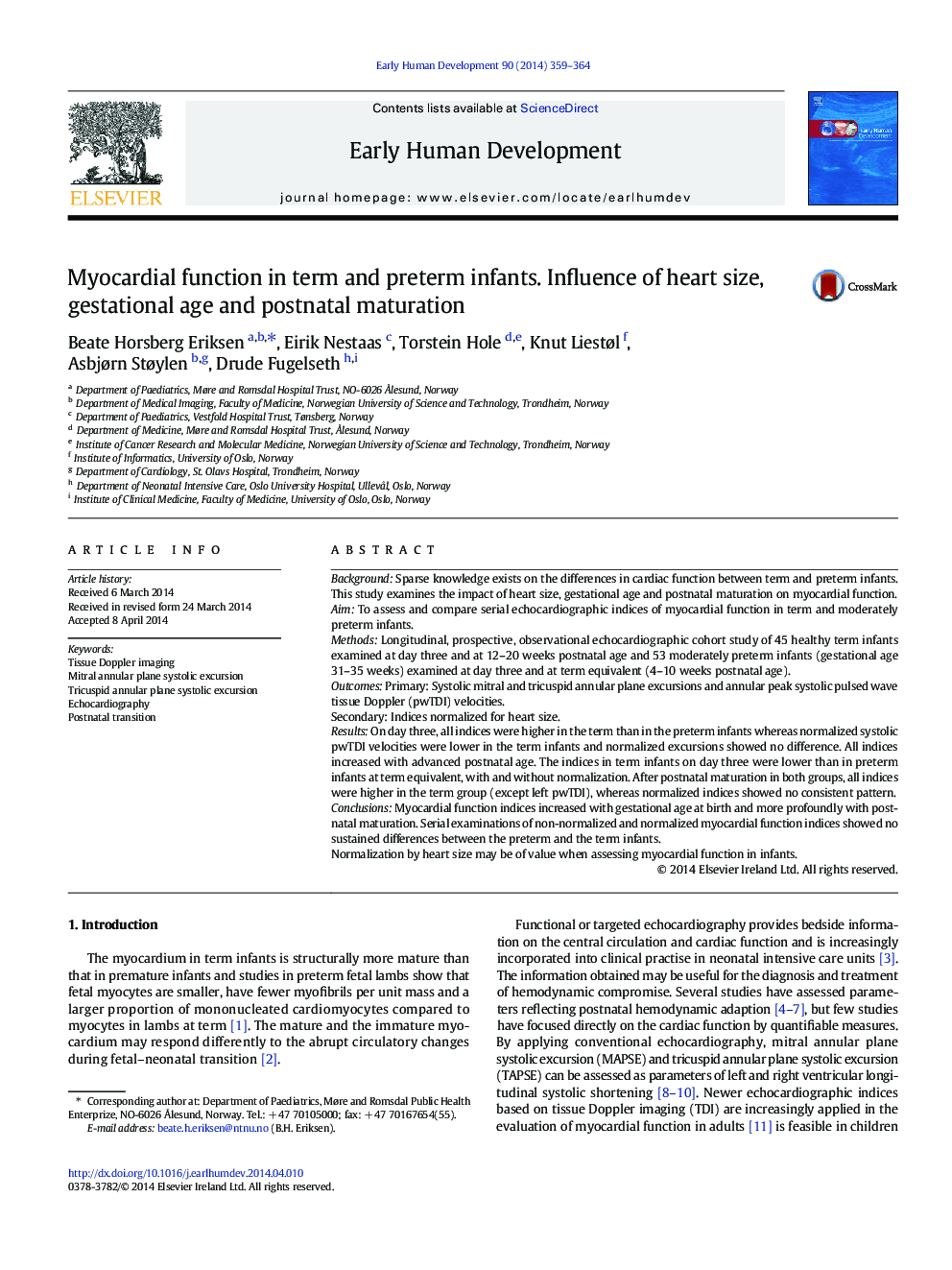| Article ID | Journal | Published Year | Pages | File Type |
|---|---|---|---|---|
| 3916582 | Early Human Development | 2014 | 6 Pages |
BackgroundSparse knowledge exists on the differences in cardiac function between term and preterm infants. This study examines the impact of heart size, gestational age and postnatal maturation on myocardial function.AimTo assess and compare serial echocardiographic indices of myocardial function in term and moderately preterm infants.MethodsLongitudinal, prospective, observational echocardiographic cohort study of 45 healthy term infants examined at day three and at 12–20 weeks postnatal age and 53 moderately preterm infants (gestational age 31–35 weeks) examined at day three and at term equivalent (4–10 weeks postnatal age).OutcomesPrimary: Systolic mitral and tricuspid annular plane excursions and annular peak systolic pulsed wave tissue Doppler (pwTDI) velocities.Secondary: Indices normalized for heart size.ResultsOn day three, all indices were higher in the term than in the preterm infants whereas normalized systolic pwTDI velocities were lower in the term infants and normalized excursions showed no difference. All indices increased with advanced postnatal age. The indices in term infants on day three were lower than in preterm infants at term equivalent, with and without normalization. After postnatal maturation in both groups, all indices were higher in the term group (except left pwTDI), whereas normalized indices showed no consistent pattern.ConclusionsMyocardial function indices increased with gestational age at birth and more profoundly with postnatal maturation. Serial examinations of non-normalized and normalized myocardial function indices showed no sustained differences between the preterm and the term infants.Normalization by heart size may be of value when assessing myocardial function in infants.
